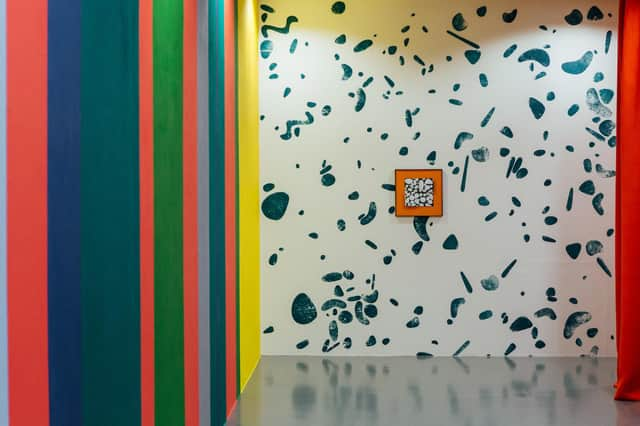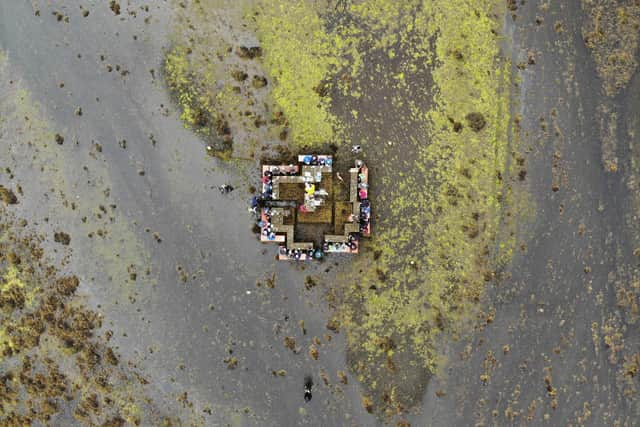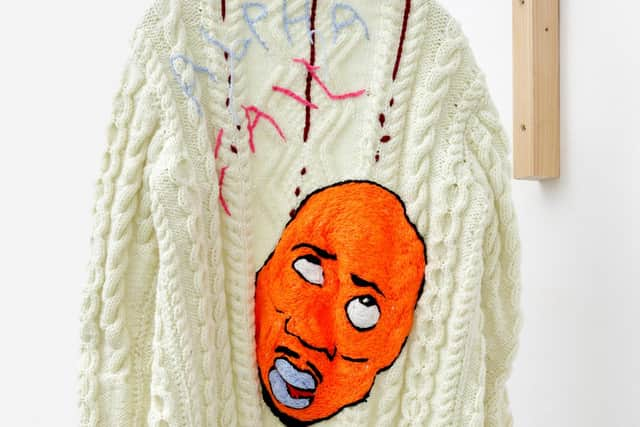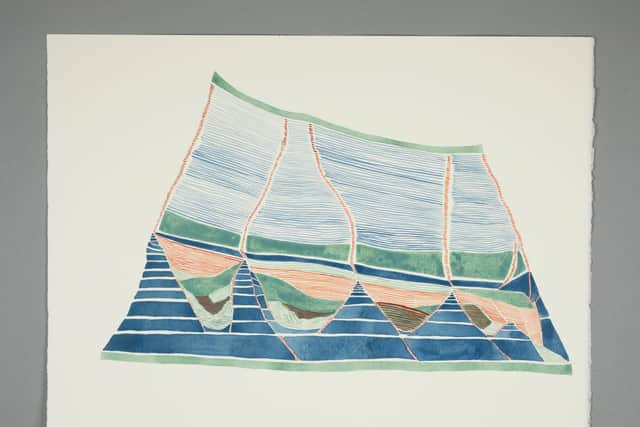Art reviews: British Art show 9, Aberdeen Art Gallery | Ilana Halperin, Mount Stuart


British Art Show 9, Aberdeen Art Gallery ****
Ilana Halperin: There is a Volcano Behind My House, Mount Stuart, Isle of Bute ****
The British Art Show has happened every five years since 1979, a snapshot of British contemporary art organised by Hayward Gallery Touring. It’s ninth iteration happens now in an extraordinary moment, not only in the wake of the pandemic, but when the notion of Britishness is itself being questioned.
Advertisement
Hide Ad

Opening (after two postponements) in Aberdeen, the notion of devolution is quietly glossed over, but the show does provide a welcome chance to showcase the superb refurbishment of Aberdeen Art Gallery, unveiled just a few months before the pandemic hit.
Occupying rooms on three floors of the gallery, including some normally reserved for the permanent collection, BAS9 is a demanding show in terms of time as well as space. Film is the predominant medium, sometimes as one element in multi-media installations, and there is a discrete film programme with a run-time of several hours.
Curators Irene Aristizabal and Hammad Nasar will create a new version for each of the show’s four venues; 33 out of a total of 47 artists are represented here. They went looking for artists who have something to say about the times in which we live and, while their selection was made before the pandemic, the work addresses subjects which have grown more pertinent in the last 18 months: race and colonial history; our relationship with the environment; new ways of doing society.
Most artists here are looking outside the art world for material, and some are making work there too. Cooking Sections (Daniel Fernández Pascual and Alon Schwabe) have been engaged in Climavore, a project looking at the environmental impact of salmon farming on the Isle of Skye, for more than five years. The fruits of their efforts can be seen on the menu in the gallery cafe and local restaurants. Abigail Reynolds has created a participatory project in the nearby Central Library.


Several artists are engaging with difficult histories. Glasgow-based Alberta Whittle, who will make work for Scotland’s show in next year’s Venice Biennale, presents the first in a series of films about the legacies of colonialism, inspired by the departure of the Mayflower from Plymouth (one of the tour’s venues) 400 years ago. The project is called Hindsight is a luxury you cannot afford. Another Glasgow artist, Hardeep Pandhal, takes a multifaceted look at racism through the ages with his lively tongue-in-cheek drawings, wall painting and knitting (a collaboration with his mother). Syrian-Armenian artist Hrair Sarkissian has made a powerful soundscape recorded while forensic archaeologists were excavating mass graves in Spain. Elaine Mitchener reads out the names of enslaved people from a Jamaican plantation owned by a man who hailed from Aberdeenshire in a kind of lament.
Other issues are much more millennial: Zach Blas ressurects Tay, a Microsoft chatbot designed to imitate a young American female, which was shut down almost immediately after being targetted by internet trolls. He gives her a voice, and something to say. In The Needle and the Larynx, Marianna Simnett contrasts clinical footage of a Botox procedure intended to deepen her voice with a dreamy fable about gender.
Advertisement
Hide AdSeveral of the artists focus on humankind’s relationship with the non-human world. Patrick Goddard’s superb satirical film Animal Antics depicts a woman and her talking dog on a visit to a zoo, their conversation illuminating our contradictory relationship with animals. Hanna Tuulikki’s Away with the birds is a meditative reflection on Hebridean birds, comprising a vocal composition for ten singers and some fine drawings.
There are a variety of approaches to making a better world, from the overtly political discourse of Kathrin Bohm, to the thoughtful documentary work of Uriel Orlow, looking at the plant Artemesia afra, native to the Democratic Republic of Congo, and its underused anti-malarial properties. Michael Armitage’s paintings and prints inspired by aspects of life in East Africa are skilful and thought-provoking.
Advertisement
Hide Ad

And there are works which don’t fit any category, from Tai Shani’s psychedelic-gothic Neon Hieroglyph to Margaret Salmon’s subtle work I you me we us, made for DCA in 2018. Tucked away in a corner, this silent dialogue between two screens about communication, intimacy and touch has profound resonance after more than a year of social distancing.
If BAS9 is a big, sprawling show, Ilana Halperin’s There is Volcano Behind My House, at Mount Stuart on Bute, is not exactly a small show, but it is show of small works which take on big subjects. Halperin was the recipient of last year’s contemporary art residency at the neo-gothic country seat of the Marquisses of Bute, but her show was postponed by the pandemic until this year.
Halperin’s enduring interest is in geology, both in its specifics and as a metaphor for human relationships to time and change. She has a house on Bute (which really does have an extinct volcano behind it) and her work addresses both the rich geology of the island and Mount Stuart as a treasure trove for acquired geology: Italian marble, fossil-rich limestone, even a mica ceiling help furnish its extravagant architecture.
The foundation of her work is a series of 36 watercolours depicting elements of the island’s geological landscape, from aerial views of rock formations to the detailed consideration of a single stone. These delicate, beautifully coloured, semi-abstract works are also a nod to textile patterns created by her mother, a fashion designer, in the 1960s and 1970s. Three of them have been made into textile works, two by local manufacturers Bute Fabrics, and one by Knitstanbul, a collective of Syrian women living in Turkey. They are exquisitely made and look great in Mount Stuart’s sumptuous rooms.


Halperin displays her own collection of works on mica in the house’s library (the multi-layered stone samples are known as “libraries” of mica). She creates tiny, detailed laser-etchings on their polished surfaces inspired by trace fossils – not fossilised bodies, but the traces left by living things long, long ago. Small and beautiful, they both accentuate their otherness and draw us closer to other lived lives.
In another work which narrows the gap between deep time and our own time, she brings together a collection of objects which have been treated in calcifying springs in France, accelerating a geological process of centuries into just a few months. Displayed almost reverentially in the crypt, they were a kind of fossil to begin with, fragments of clay tiles and pipes found on the island from a brickworks at Kilchattan which closed in 1915. They are transformed into pearly white objects which are at once old, new and somewhere in between.
Advertisement
Hide AdIn this work, Halperin homes in on a small geographical area, but the scope of her work does not, performing its own kind of magic with space and time and reaching out to touch on multitudinous issues.
British Art Show 9 runs until 10 October; Ilana Halperin until 15 August
A message from the Editor:
Advertisement
Hide AdThank you for reading this article. We're more reliant on your support than ever as the shift in consumer habits brought about by coronavirus impacts our advertisers.
If you haven't already, please consider supporting our trusted, fact-checked journalism by taking out a digital subscription at https://www.scotsman.com/subscriptions